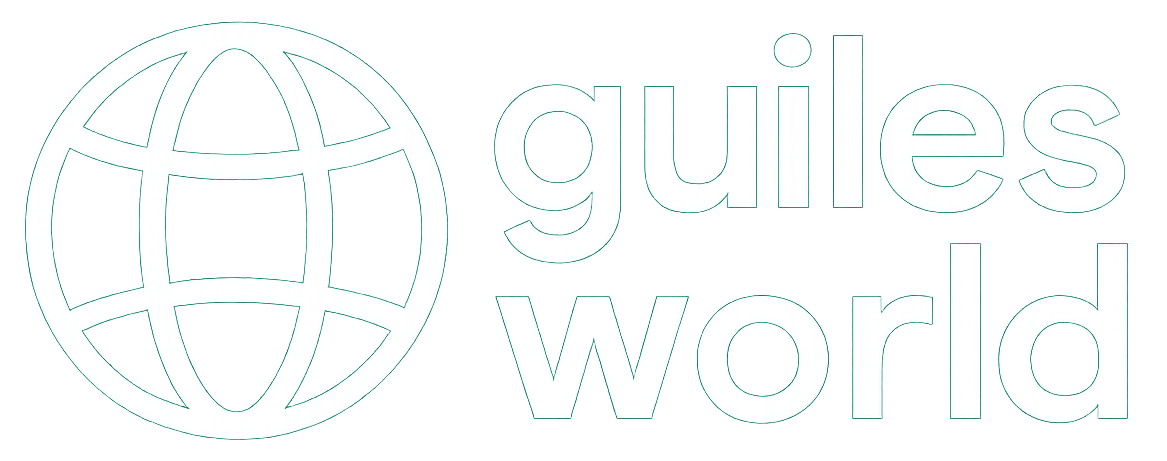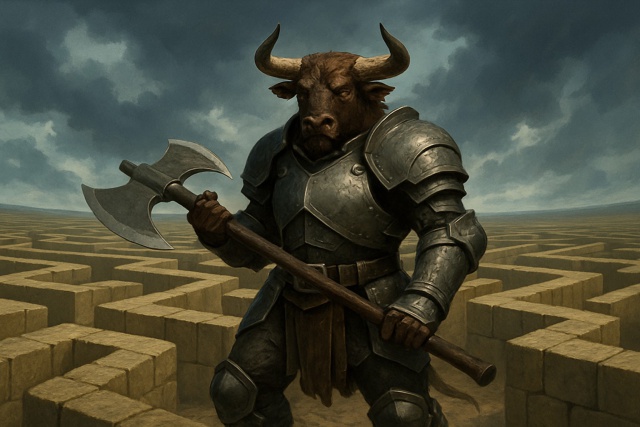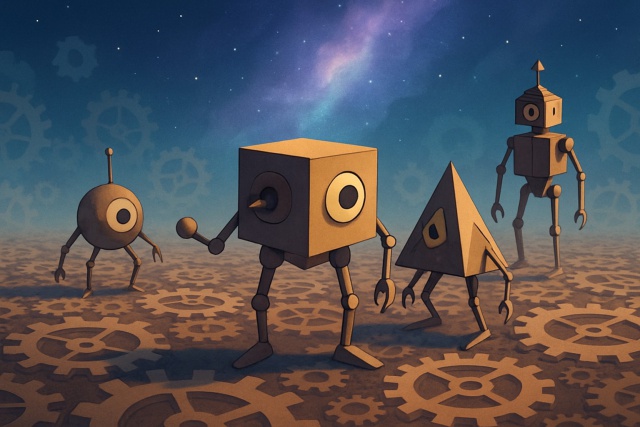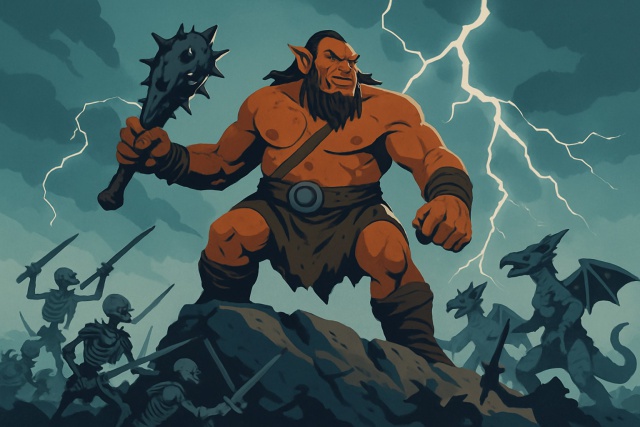
Understanding the D&D Great Wheel Planar System

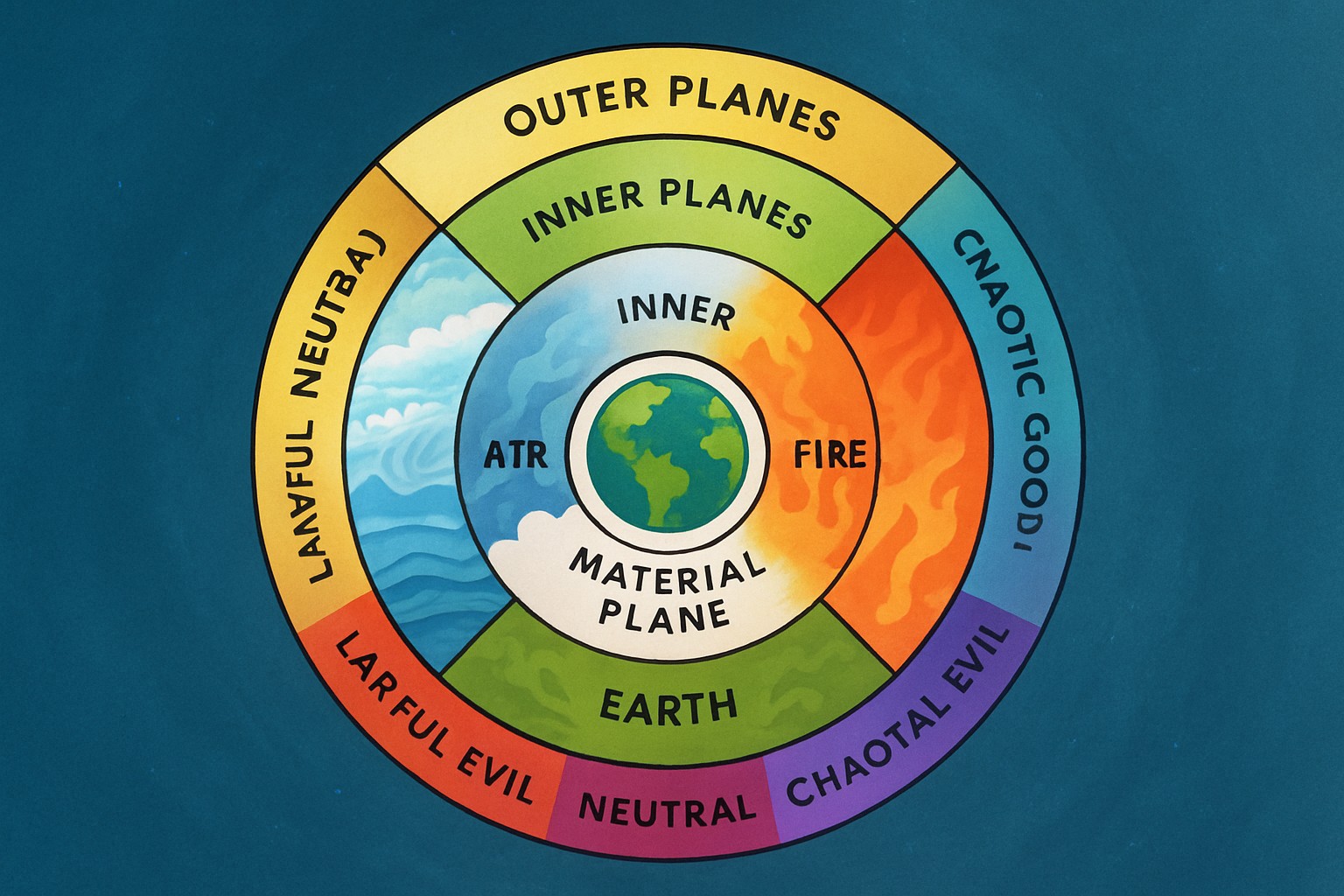
The Dungeons & Dragons Great Wheel planar system is basically the beating heart of the cosmology behind many D&D editions and settings. This article takes a close look at its setup and explains what each plane is about, how they connect, and why they matter.
How Exactly Does the D&D Great Wheel Planar System Work?
The Great Wheel serves as a detailed model of the multiverse in Dungeons & Dragons and helps paint a clearer picture of how the different planes of existence are linked together. It made its debut in the game’s earlier editions and has become a trusty guide for Dungeon Masters and players alike. It offers a solid framework to understand the cosmology, map magical realms, and bring more meaning their stories.
- The Great Wheel lays out a collection of realities called "planes" that run by their own unique rules and energies.
- It draws a clear line between the Material Plane where most adventures unfold and the Outer and Inner Planes, each with its own flavor and quirks.
- Getting a handle on this cosmology can breathe life into your game by weaving magic, divine powers and moral themes into gameplay naturally.
- Unlike other models, the Great Wheel arranges these planes in a circle that reflects their ethical and elemental alignments making it feel like the universe’s own moral compass.
A Quick Tour of the Basic Structure of the Great Wheel
Picture the Great Wheel as a vast cosmic blueprint shaped like a giant circle or wheel. Right in the middle sits the Material Plane, the familiar world where most D&D adventures unfold and the place you would call home base. Surrounding it are the Inner Planes, home to elemental forces like fire and water that help shape reality. Step further out and you reach the Outer Planes arranged in a wide circle where gods and primordial energies hang out reflecting different moral and philosophical alignments.
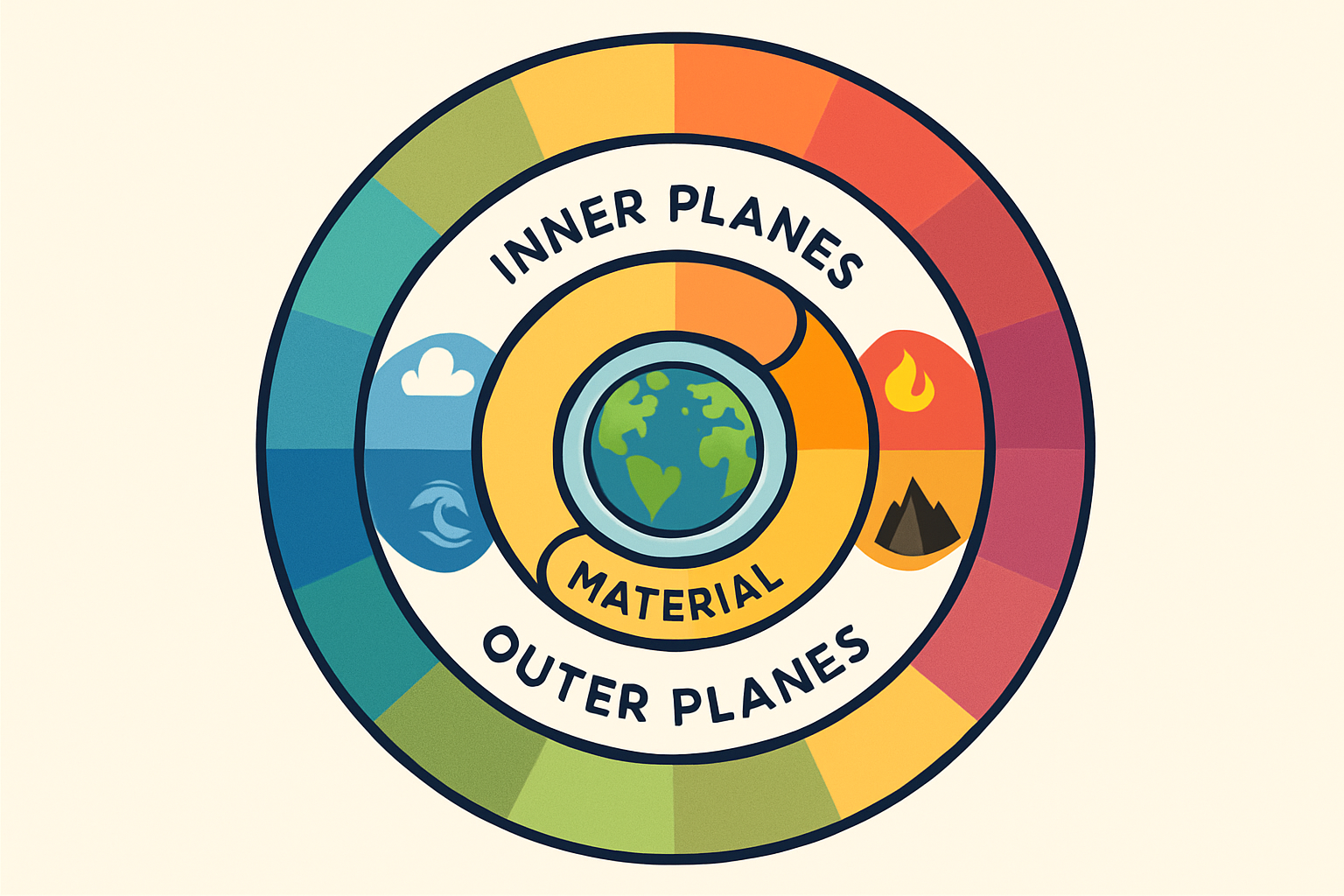
Diagram of the D&D Great Wheel planar system illustrating the relationship between the Material, Inner, and Outer Planes
The Material Plane as the Heartbeat of Reality
The Material Plane is the heart and soul of most Dungeons & Dragons adventures. It’s the physical world you can almost reach out and touch—think continents, skies, oceans and all the creatures that call it home. It is where the bulk of those epic tales unfold. Serving as a kind of crossroads, it connects with every other plane. It acts as a bustling hub where the mysterious energies from the Inner and Outer Planes mingle and dance, weaving together the natural and supernatural threads that give this world its unique flavor.
Where Forces Dance and Collide
The Inner Planes are fundamental realms made up of pure elemental forces and energies that fuel the universe. They include the classic four Elemental Planes: Air, Earth, Fire, and Water plus the Positive and Negative Energy Planes which add their own special twist.
- The Elemental Planes show the raw essences of Air, Earth, Fire, and Water and their often unpredictable and untamed natures. They don’t exactly like to sit still.
- The Positive Energy Plane acts like a bubbling spring of life and healing magic practically bursting with restorative power.
- The Negative Energy Plane embodies entropy, death and decay and is a serious threat to anything with a heartbeat.
- The interplay between the elemental and energy planes shapes natural events and magical effects we either marvel at or nervously watch unfold.
- These planes aren’t just background trivia—they actively influence spellcasting, creature abilities and the unique risks of planar travel, adding a thrilling edge to every adventure.
The Outer Planes The Mysterious Realms Where Alignment and Divine Influence Play Their Hands
Surrounding the Inner and Material Planes are the Outer Planes—vast and sprawling realms that embody moral, ethical and philosophical ideals in their purest forms. Each one aligns along the classic axes of Law versus Chaos and Good versus Evil and acts as the celestial hangouts for gods, angels, devils, demons and a host of other cosmic characters.
| Plane Name | Alignment | Typical Inhabitants | Thematic Description |
|---|---|---|---|
| Mount Celestia | Lawful Good | Angels, Archons, Good Deities | A realm that feels like the very heart of justice, virtue, and unshakeable order — the kind of place where everything is just as it should be |
| Arcadia | Lawful Good/Neutral | Eladrin, Fey, Guardians | A peaceful plane where harmony reigns supreme and protection is the name of the game |
| Bytopia | Neutral Good/Lawful Neutral | Good-aligned outsiders, Celestials | A fascinating two-layered realm built on cooperation and resilience — think of it as teamwork personified |
| Mechanus | Lawful Neutral | Modrons, Inevitables | The embodiment of absolute law and strict order; if you like your rules firmly nailed down, this is your spot |
| Acheron | Lawful Neutral/Chaotic Neutral | Warlike spirits, endless battlefields | A harsh place of relentless war and never-ending conflict — not exactly a vacation destination |
| Gehenna | Lawful Evil | Devils, Tyrants | A fiery domain where tyranny rules with an iron fist and punishment is no joke |
| The Abyss | Chaotic Evil | Demons, Malignant Chaos | A chaotic realm bursting at the seams with destruction and pure evil |
| Pandemonium | Chaotic Neutral | Insane spirits, chaotic entities | Picture a wild plane whipped by maddening winds, where madness lives and breathes |
| Limbo | Chaotic Neutral | Slaadi, Elementals | The ultimate realm of pure chaos — where everything’s in constant, unpredictable flux |
| Elysium | Neutral Good | Spirits, Saints, Benevolent Fae | A blissful plane that offers rest and peace in abundance, like a warm, comforting hug |
| Hades | Neutral Evil | Shades, Undead | A bleak, grim place dripping with despair and decay — definitely not for the faint of heart |
| Carceri | Neutral Evil/Chaotic Evil | Imprisoned fiends, dark entities | A prison plane thick with betrayal and darkness; not somewhere you want to find yourself if you can help it |
These Outer Planes thoughtfully map out the moral spectrum, laying down a sprawling cosmic stage where player alignment and ethical choices really come to life.
"Imagine the Outer Planes as sprawling 'moral neighborhoods,' each street buzzing with its own unique vibe of ethics and beliefs, making those big, abstract ideas like good, evil, law, and chaos feel a lot more down-to-earth—and honestly, a bit easier to wrap your head around."
Traveling and Connecting Between Planes Navigating the Airport Maze with a Smile
In D&D adventurers frequently hop between planes using spells or magical portals or those mysterious natural planar pathways. These trips aren’t exactly a walk in the park—they can be risky and unpredictable—so careful prep and solid know-how usually go a long way in keeping things safe.
- The Plane Shift spell is the go-to magical trick for characters looking to zip straight from one plane to another.
- Portals and planar gates can hang around for a while or pop up temporarily and serve as handy bridges connecting various realms.
- Some natural hotspots like ley lines or thin places often make planar travel feel more effortless or even happen on the fly.
- Hopping between planes isn’t all smooth sailing. There’s always a chance of getting disoriented or bumping into nasty energies or crossing paths with local inhabitants.
Planar travel comes with its own quirky mix of challenges and perks, like shifts in how magic behaves and some added environmental risks that keep things interesting.
Why the Great Wheel Still Holds a Special Place in D&D Lore and Gameplay
Understanding the Great Wheel truly adds a new layer of depth for both players and Dungeon Masters. It lays out a detailed framework for worldbuilding, explores where magic springs from and helps anchor character motivations within the broader cosmology.
- It helps worldbuilders craft believable cosmologies by making tricky cosmic connections between planes clear and logical instead of a tangled mess.
- The Great Wheel is a trusty tool for designing adventures that involve planar travel, showcase different environments, and include unusual challenges.
- It offers a handy framework for understanding the roles of deities, divine magic and curious ideas about the afterlife.
- Players can enrich their characters' backstories by linking them to specific planes or enigmatic planar beings, adding layers that bring the story to life.
Common Misunderstandings About the Great Wheel That Often Trip People Up
The Great Wheel has a detailed structure but it’s often misunderstood. Some people see it as rigid and unchanging while others assume the planes are completely separate and never interact. Some even mix it up with other D&D cosmologies such as the World Tree or the Feywild/Shadowfell divide, which makes the whole picture more tangled.
- The Great Wheel is not the only game in town when it comes to D&D cosmology. It is one of several frameworks you can adjust to match your campaign's vibe.
- The planes connect through twists and turns and are not completely separate, so crossing boundaries can get interesting.
- The Material Plane is the main focus but does not sit above or below the others in a hierarchy.
- Traveling between planes can be tricky but with the right approach it’s usually a smooth and well-planned process rather than a risky gamble.
- The Outer Planes cover the full range of alignments beyond the classic extremes of pure good or total evil.
Important Terms to Keep in Mind (Because These Really Matter)
- Material Plane: The main physical world where most D&D adventures unfold and the place you call home when you are not lost in otherworldly chaos.
- Inner Planes: Elemental and energy-filled realms that quietly stitch together the fabric of reality. Think of them as the universe’s backstage crew.
- Outer Planes: Vast worlds shaped by moral and ethical forces. They are often the playground for gods and mighty beings with agendas of their own.
- Alignment: A handy way to sum up the moral compass and ethical tendencies that steer both characters and planes because even worlds need a bit of personality.
- Planar Travel: The mind-boggling act of hopping from one plane to another. Basically, cosmic travel but with a bit more flair.
- Deity Realms: Special Outer Planes tied to gods and powerful entities where divine politics and epic dramas unfold behind closed gates.
- Elemental Planes: The Air, Earth, Fire and Water planes, each a vibrant embodiment of those raw core forces like nature’s most intense mood swings.
